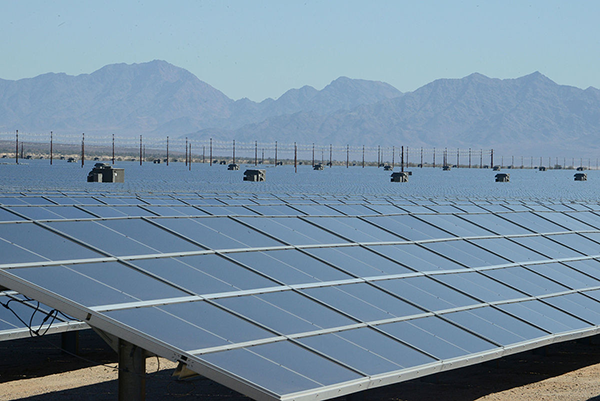Top-down legislation threatens renewable energy and CO2 reduction
July 9, 2025
Two years ago, jurisdictions on both sides of the U.S./Canada border were moving briskly ahead with legislation to curtail CO2 emissions. At the same time, programs that discouraged non-fossil power generation and instead incentivized the increase of renewable sources were gaining widespread support. The AEC industry took this cue to make adjustments of its own.
The tide may be turning at the top level of governments both in Canada and the United States. The industry needs to keep pace with recent changes and possible trickle-down effects.
Renewables such as solar and wind generation have been a specific target for incentive cutbacks in the United States.
With the passing of President Donald Trump’s “One Big Beautiful Bill Act” in early July, most federal tax breaks for wind and solar power, electric vehicles and other clean energy are now cancelled. Many of these incentives had been in place for decades and were made even more lucrative under the Biden administration’s Inflation Reduction Act. Over $15.5 billion in projects involving battery, electric vehicle and solar panel factories have been cancelled since January 2025 in anticipation of the act.
Now, wind and solar companies planning large power generation projects will only qualify for the full tax break if construction begins by 2027 or the project is put into service within 12 months of the bill’s enactment. After that, no tax breaks apply. Incentives for homeowners purchasing residential solar installations now end in December and at the end of 2027 for those who lease.

At the state and municipal level, legal actions have been launched, challenging or setting aside laws that supported renewable energy and CO2 reduction.
For example, with the aid of industry lobbying, southern California has been forced to reverse its phase-out of gas-powered furnaces and water heaters. This would have required manufacturers to ramp up sales of electric alternatives like electric heat pumps to 90 per cent by 2036. Critics of the legislation, which included influence from SoCalGas parent Sempra, argued the proposal would have burdened homeowners with costs as high as $8.9 billion annually.
The impact of successful fossil fuel industry lobbying may be soon felt in all of California and other states across the United States. Maryland’s ban on natural gas appliances in new construction is being challenged in court by building organizations teamed with the Washington Gas Light Company, on the basis the ban is pre-empted by federal law.
Even Canada is feeling some trickle-down effects.
Six months ago, Québec announced a ban on fossil-fuelled appliances in new residential and in existing buildings with a maximum surface area of 600 m² and three storeys or less. However, the province has reportedly failed to put any measures into action.
In fact, as reported in LaPresse, Québec is lowering its greenhouse gas emission reduction ambitions by two percentage points compared to its 2024-2029 Implementation Plan (PMO) of the Plan for a Green Economy in Québec.
Québec cites the economic impacts of tariffs imposed by the Trump administration, the cancellation of carbon pricing mechanisms in various U.S. states, and the slowdown of corporate investment in decarbonization. It adds the recent abolition of carbon pricing by both the Canadian and British Columbia governments could “harm the competitiveness of Québec businesses.”
On a municipal level, the Residential Construction Council of Ontario filed an application last December in the Ontario Superior Court of Justice, challenging the authority of the City of Toronto and its Green Standards, claiming the standards made home construction slower, more complicated and expensive.
Yet it’s not all bad news for those hoping for CO2 reduction legislation.
New York City’s Local Law 97, passed in 2019, had its validity reaffirmed by the New York State Court of Appeals this past May. Regarded as the nation’s model for cutting building emissions, the law passed a critical milestone on June 30 for the first round of compliance towards its aim to cut building emissions by 40 per cent by 2030.
Meanwhile, the State of Colorado is about to adopt a Low Energy and Carbon Code. It’s the next stage of its 2022 energy code bill requiring local jurisdictions to adopt the most up-to-date model energy codes whenever they decide to update local building regulations.
In British Columbia, the province’s Low Carbon Fuel Standard encourages the use of renewable and low carbon fuels, and offers incentives to organizations that supply them. Incentives depend on how much these fuels cut greenhouse gas emissions compared to conventional fuels.
And unlike the United States, the new Liberal government in Ottawa announced a long list of renewable energy programmes to encourage more clean energy projects across the country, despite the recent public focus on coast-to-coast fossil-fuel pipelines.
Nevertheless, with governments at all levels rushing to build new homes and national infrastructure, it will come down to public awareness and pressure to keep continued CO2 reduction part of those plans.
As Janetta McKenzie, director of the Pembina Institute’s oil and gas program wrote recently in the Globe and Mail, there must be effective industry regulations.
“Becoming an ‘energy superpower’ means equipping ourselves to lead in that world.”
John Bleasby is a freelance writer. Send comments and Climate and Construction column ideas to editor@dailycommercialnews.com.
Search
RECENT PRESS RELEASES
Related Post



